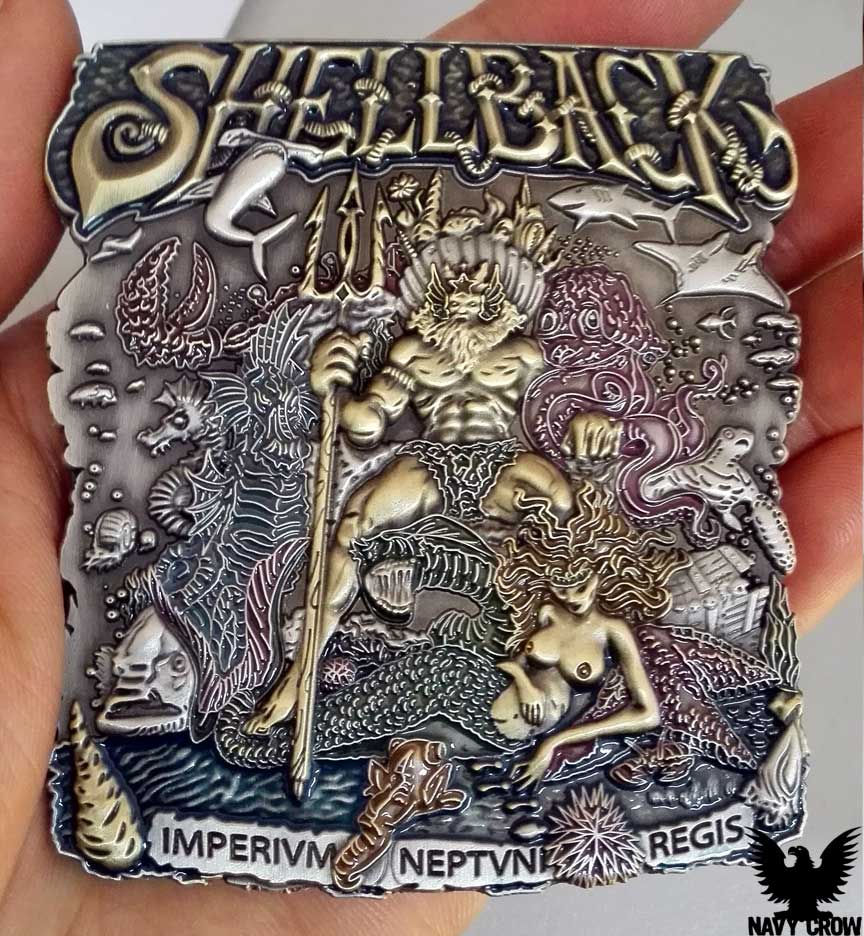SHELLBACKS – A PROUD NAVAL HISTORY
No one is really sure when or how the Line Crossing Ceremony, “Order of Neptune”, came about. The ritual dates back at least 400 years in Western seafaring.
The ceremony observes a mariner’s transformation from slimy Pollywog, a seaman who hasn’t crossed the equator, to trusty Shellback, also called a Son or Daughter of Neptune. It was a way for sailors to be tested for their seaworthiness.
The story of the Shellback is a most storied one dating back to the days of the Viking seafarers, and the Spaniard navy. The exact details are lost to history, but some of the details that have survived is that sailors on their first voyage were put through a series of tests, to prove their worth to the crew. The Vikings would repeatedly beat the new crewmembers and make them run a gauntlet of sort to prove their ability in battle. As the world’s navies began to develop over the years so did the tradition, often times still used by salty old sailors whom had crossed the equator many times over to test the ability and determination of new crewmembers ability to survive long voyages at sea. Veterans were known as Shellbacks, and newbies as Pollywogs.
THE SHELLBACK CEREMONY
In the US Navy this has transpired in modern times into a two day event with semi-official status. The event planning begins months in advance with Trusty Shellbacks ensuring the most intricate details, the senior most Shellbacks will dress in costume and play members of the Royal Court of King Neptune and his Queen Davy Jones. The first day is all about preparing the Pollywogs for their journey, some ships make report of a Pollywog Rebellion where Wogs are allowed to torment a Shellback all the while being warned that revenge will follow the next day. After crossing the line the Wogs begin the initiation process which has varied across ships, and fleets over the centuries. One more controversial aspect is the “Royal Baby”, as referred to me the Command Master Chief found the most obese hairy Sailor that he could find aboard the ship
dressed the “baby” in a diaper and smothered his belly in lard. The Pollywogs then were required to crawl on their hands and knees to the Royal Baby and eat a maraschino cherry out of his navel.
When a ship crosses the equator or “crossing the line”, King Neptune comes aboard to exercise authority over his domain and to judge charges brought against Pollywogs that they are only posing as Sailors and haven’t paid proper homage to the god of the sea. High ranking members of the crew and those who have been Shellbacks the longest dress up in elaborate costume and each play the part of King Neptune’s court. For instance, the ship’s Captain might play the part of King Neptune himself. What proceeds is a day of festivities, which builds camaraderie among the seafaring crew.
After crossing the line, Pollywogs receive subpoenas to appear before King Neptune and his court (usually including his first assistant Davy Jones and her Highness Amphitrite and often various dignitaries, who are all represented by the highest ranking seamen), who officiate at the ceremony, which is often preceded by a beauty contest of men dressing up as women, each department of the ship being required to introduce one contestant in swimsuit drag. Afterwards, some Wogs may be “interrogated” by King Neptune and his entourage, and the use of “truth serum” (hot sauce + after shave) and whole uncooked eggs put in the mouth. During the ceremony, the Pollywogs undergo a number of increasingly embarrassing ordeals (wearing clothing inside out and backwards; crawling on hands and knees on nonskid-coated decks; being swatted with short lengths of fire hose; being locked in stocks and pillories and pelted with mushy fruit; being locked in a water coffin of salt-water and bright green sea dye, crawling through chutes or large tubs of rotting garbage; kissing the Royal Baby’s belly coated with axle grease, hair chopping, etc.), largely for the entertainment of the Shellbacks.
SHELLBACKS OF A DIFFERENT VARIETY
Another rare status is the Golden Shellback, a person who has crossed the Equator at the 180th meridian (International Date Line). The rarest Shellback status is that of the Emerald Shellback (USA), or Royal Diamond Shellback (Commonwealth), which is received after crossing the Equator at the prime meridian. When a ship must cross the Equator reasonably close to one of these meridians, the ship’s captain will typically plot a course across the Golden X so that the ship’s crew can be initiated as Golden or Emerald/Royal Diamond Shellbacks: A Proud Naval Tradition!
NOTEWORTHY LINE CROSSINGS
In 1936 President Franklin Roosevelt aboard the USS Indianapolis was summoned before the court of King Neptune and made to answer a series of charges. He may have been President of the US, and Commander in Chief but he still was made to go through a series of ordeals as a Slimy Wog. At the end of the day the President was honored with the rest of the crew and awarded a Honorable and Trusty Shellback certificate.
The University of Virginia‘s Semester at Sea Program holds a line-crossing ceremony twice a year for its students when their vessel, the MV Explorer (2001), crosses the equator. Shellbacks: A Proud Naval Tradition!
In 2010 an International line crossing ceremony was held aboard the USS New Orleans.
CONTROVERSY
In the 19th century and earlier, the line-crossing ceremony was quite a brutal event, often involving beating pollywogs with boards and wet ropes and sometimes throwing the victims over the side of the ship, dragging the pollywog in the surf from the stern. In more than one instance, sailors were reported to have been killed while participating in a line-crossing ceremony. Shellbacks: A Proud Naval Tradition!
As late as World War II, the line-crossing ceremony was still rather rough and involved activities such as the “Devil’s Tongue”, which was an electrified piece of metal poked into the sides of Wogs. Beatings were often still common, usually with wet fire hoses, and several World War II Navy deck logs speak of sailors visiting sick bay after crossing the line.
Efforts to curtail the line-crossing ceremony did not begin until the 1980s, when several reports of blatant hazing began to circulate regarding the line-crossing ceremony, and at least one death was attributed to abuse while crossing the line. By the late 1990s the US Navy and the navies of the western world changed the evolution of this proud tradition as words such as Political Correctness and Hazing that had never seen the light of day now became common terms within the naval services. Some argue that the navies are watering down traditions, and forgoing time honored pasts to sooth the sensibilities of Sailors today. Others will tell you that the traditions simply got out of hand, the purpose of eating hot sauce mixed with shaving cream, having to crawl through rotting food on non-skid decks while being whipped with cut up fire hoses soaked in salt water and allowed to dry forming s shillelaghs.
With time comes changes for all, the Shellback ceremony has evolved and will continue to evolve however it is important not to rush to judgment and throw out all Naval traditions merely for the sake of trying to please the masses. The ceremony started for a reason, mainly camaraderie among the ship’s crew an ever important lesson for us all to heed.













